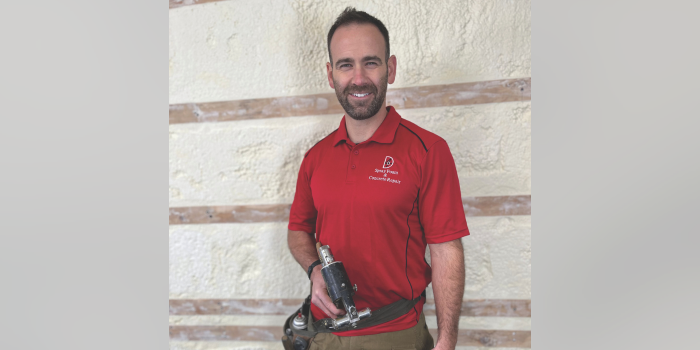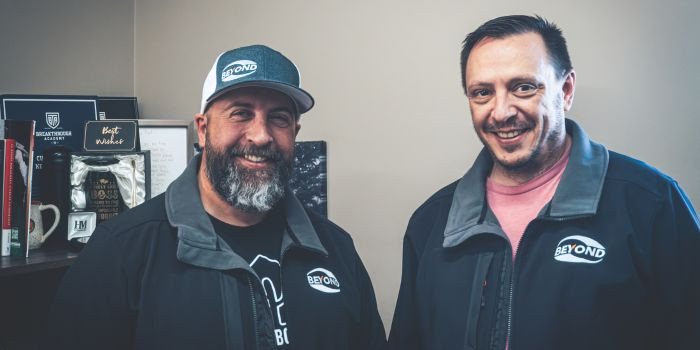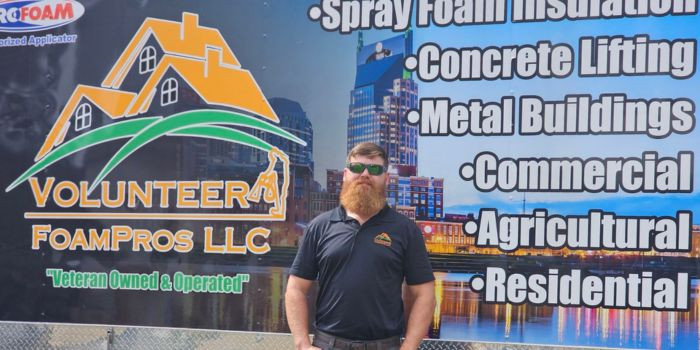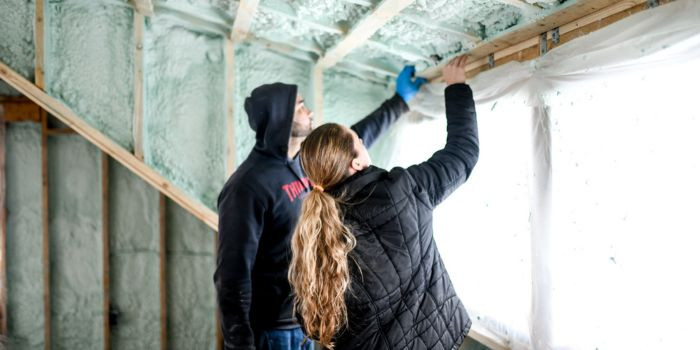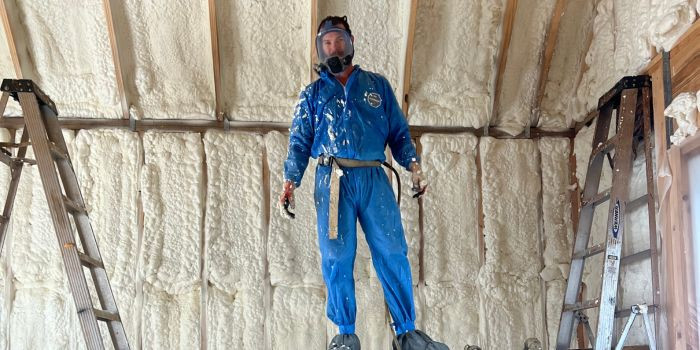House Of Entertainment


BLOOMINGTON-NORMAL, IL – March 5, 2018 – A creative forcefield. That’s what surrounds Illinois’ Bloomington-Normal metropolitan area. It is a haven for arts and theatre that brings professional, art student, and spectator together in one cohesive beat. The latter fact, with a particular emphasis on Bloomington-Normal’s creative class share of the workforce, resulted in a No. 1 rating for the creativity by famed urban studies theorist, Richard Florida.
A major contributor for the thriving entertainment scene is the growth of the city’s downtown metropolitan area, which saw a 28 percent increase in population from 1990 through 2006—the fastest population growth in all of Illinois for that period. With this growth came the rebirth of the once-dormant Cultural District, the arts and entertainment district of downtown Bloomington, and that included the revamping of one of the area’s most historic entertainment venues, The Castle Theater.
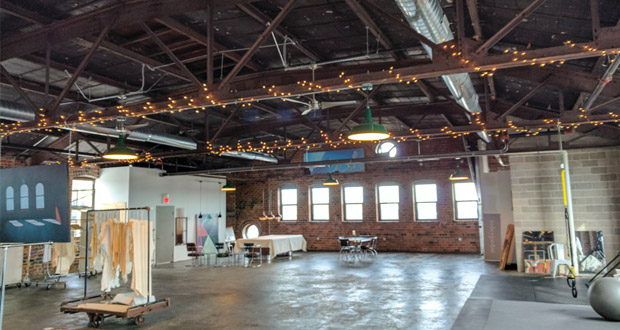 | 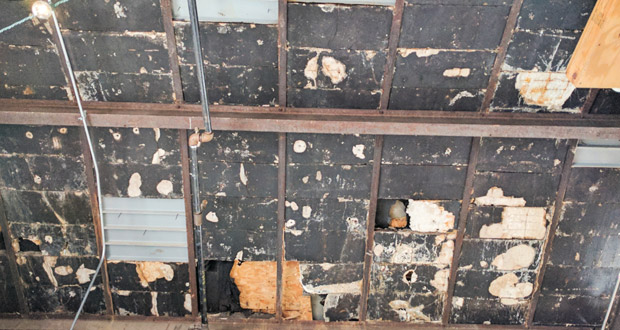 |
The roofline of the venue was not properly insulated and migratory bats had found their way inside through the cracks. A proper seal of the roofline was need before the bats returned to the Midwestern area.
Although it is now a prominent live music and event venue, The Castle Theater has a rich history that dates back over a century. It opened at the turn of the 19th century as exactly what its name states, a theater. It went from showcasing Vaudeville plays to films following a relocation and re-creation by legendary theater builders Balaban & Katz, the original inventors of the classic movie palace, and for decades was the locale that put Bloomington on the map as the place where people could escape their everyday lives and let their imagination take over.
After a while, The Castle Theater lost its spark and went through some financial struggles and had to be closed down. It reopened in 2010 as a music venue and quickly recaptured its former glory. It is currently considered one of the most prominent live music venues between Chicago, St. Louis, and Indianapolis. The venue hosts local and national touring artists attached to a plethora of music types from alternative rock to blues to jazz. In addition to being a live music venue, the space inside The Castle Theater is also often utilized for private parties, recitals, and corporate events. The resurgence of The Castle Theater did not come without several gradual renovations—a recent one being a spray foam insulation application to increase the efficiency of the building by sealing off its roofline.
Kevin Slagel of Slagel Insulation (SI) based out of Fairbury, Illinois was tapped by the building owner to carry out the application.
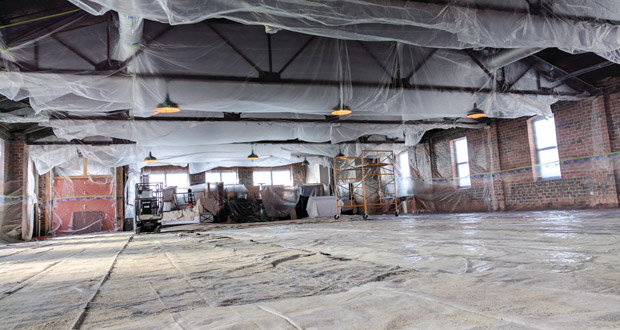
The brick walls, steel trusses, floors, and sprinkler systems were masked off for overspray damage protection before the foam installation
“There were a couple of issues with the venue,” says Slagel. “The owner was looking to increase the building’s efficiency because the existing A/C units were not cooling the area well, which meant that there was air leakage, and there was also another issue with bats. An endangered species of migratory bats were infiltrating the venue through the roof and the owner wanted to put a stop to that. We had the perfect solution to tackle both problems.”
The project consisted of insulating and painting the top floor of the historic six-story building. To eliminate the recurring bat infestation project and help heat and cool the space, the SI crew was tasked with applying spray polyurethane foam (SPF) to the underside of the roof.
RELATED Rise Up, Into The Wild, Insulating A Castle, Greater Than Gold
Spray foam was the only product that could seal the underside of the roof and the roof/wall joint, have a finished look, be aesthetically pleasing, and be painted to the desired color.”
The SI team consisted of three crew members. They prepped the area by masking off the brick walls, steel trusses, floors, and the sprinkler systems, covering the spiral ductwork, and removing ceiling fan blades and pendant light fixtures. Since the foam was able to adhere to the existing masonry surface, no surface prep was required. Before any foam was installed, the SI crew made it a point to communicate with the city of Bloomington to ensure that the adequate R-value would be met with the SPF installation without needing to move the existing sprinkler system farther away from the roof deck.
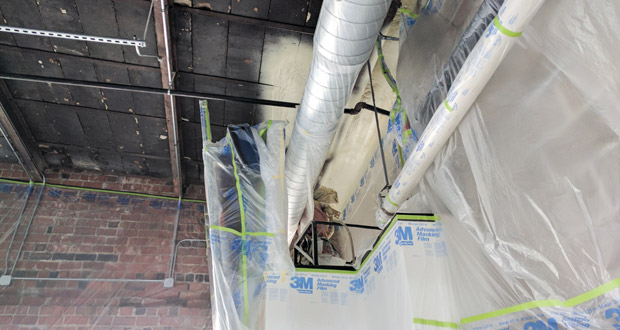
Four inches of closed-cell foam were installed to the underside of the roof, providing a water and vapor barrier seal and eliminating the chance for bats to create their nests
“The city of Bloomington gave us a variance on the energy code requirements since it was sprinkled—on top of being a historic building,” says SI’s Ted Bachtold. “They provided documentation that allowed the adequate space for the existing sprinkler system to remain as is.”
Parking on-site was a bit of a challenge for the SI crew. They were cautioned beforehand about having trailers and equipment since the building sat next to a privately owned parking lot, so Slagel had to reserve spots ahead of time with the neighboring law firm that rented those spots and sign a contract that stated that SI would repair any damages they made with their trailer. This was an important consideration as their rig, which was equipped with a Gusmer HV-20/35 proportioner, a Graco EH 333 spray pump, 265 feet of hose, and a Probler P2 gun, took up quite a few spots.
In addition to parking, the SI crew found another challenge in getting a man lift in the elevator to go up to the sixth floor. The elevator on site was small and had a weight restriction of 1,500 pounds, so SI rented two vertical driveable mast lifts: One to apply the SPF and one to apply paint to the surface after the foam had cured in each area of the roofline. In order to get it there, the crew removed the cage and drove each lift onto the elevator, but not before removing the inside handrails to gain extra space, and also lining the floor and walls with cardboard to protect the finished surfaces. The baskets were sent up to the sixth floor later. The crew then used an external boom lift to raise the heated hose up six floors (70 feet) and fed it through a window so they could apply the materials with ease.
Once on the sixth floor, the three crewmembers suited up in Tyvek suits, steel-toed boots, full-face respirators, air hoods equipped with a SlagelFoam lens cover brackets and removable lens covers, and gloves. Each applicator on the man lift wore a safety harness when they made their way up and around the roofline. The SI crew applied to the original masonry panel substrate on the underside of the roof deck four inches of SWD Quik-Shield 112 XC, a 2 lb. closed-cell SPF developed by SWD Urethane. Slagel noted that as an all season product that was formulated for extremely cold climates, Quik-Shield 112 XC was the right product for the job, especially since two inches of snow fell on the ground the day before the project commenced. The SI crew installed seven sets of foam to a total spray area of 6,272 square feet.
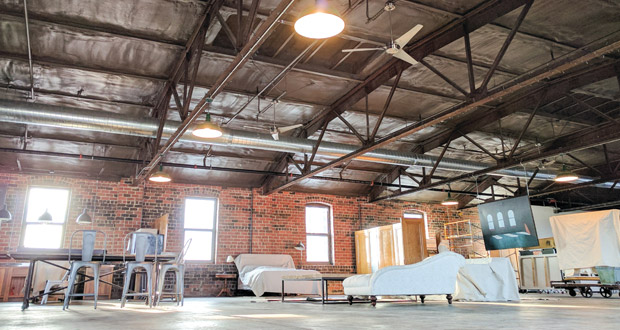
A brownish-colored paint was applied to the foam to give it an aesthetically pleasing finished look.
After the foam cured in each area, the crew member operating the second man lift sprayed the foam with two mils of Diamond Vogel’s “Wildwood,” a brownish colored paint. The SI team then caulked the windows and any holes in the brick walls with Sikaflex polyurethane caulk to close any possible cracks for bats to get in. It took six days for the SI crew to complete the job and create an air, vapor, and bat barrier for the creative space inside this celebrated spot.
“The job was time-sensitive because it was scheduled just before the migratory bats would typically return,” points out Slagel. “The species was endangered so no form of eradication was allowed in any way. Now the owner has a bat-free sixth floor and a space that can now be successfully heated and cooled. This will provide efficiency to the rest of the building.”
Maintaining a historic building like The Castle Theater hasn’t been an easy task, but with the help of products like spray foam, perhaps we will see the building flourish as it continues to be the house and source of entertainment for years to come.
Disqus website name not provided.



